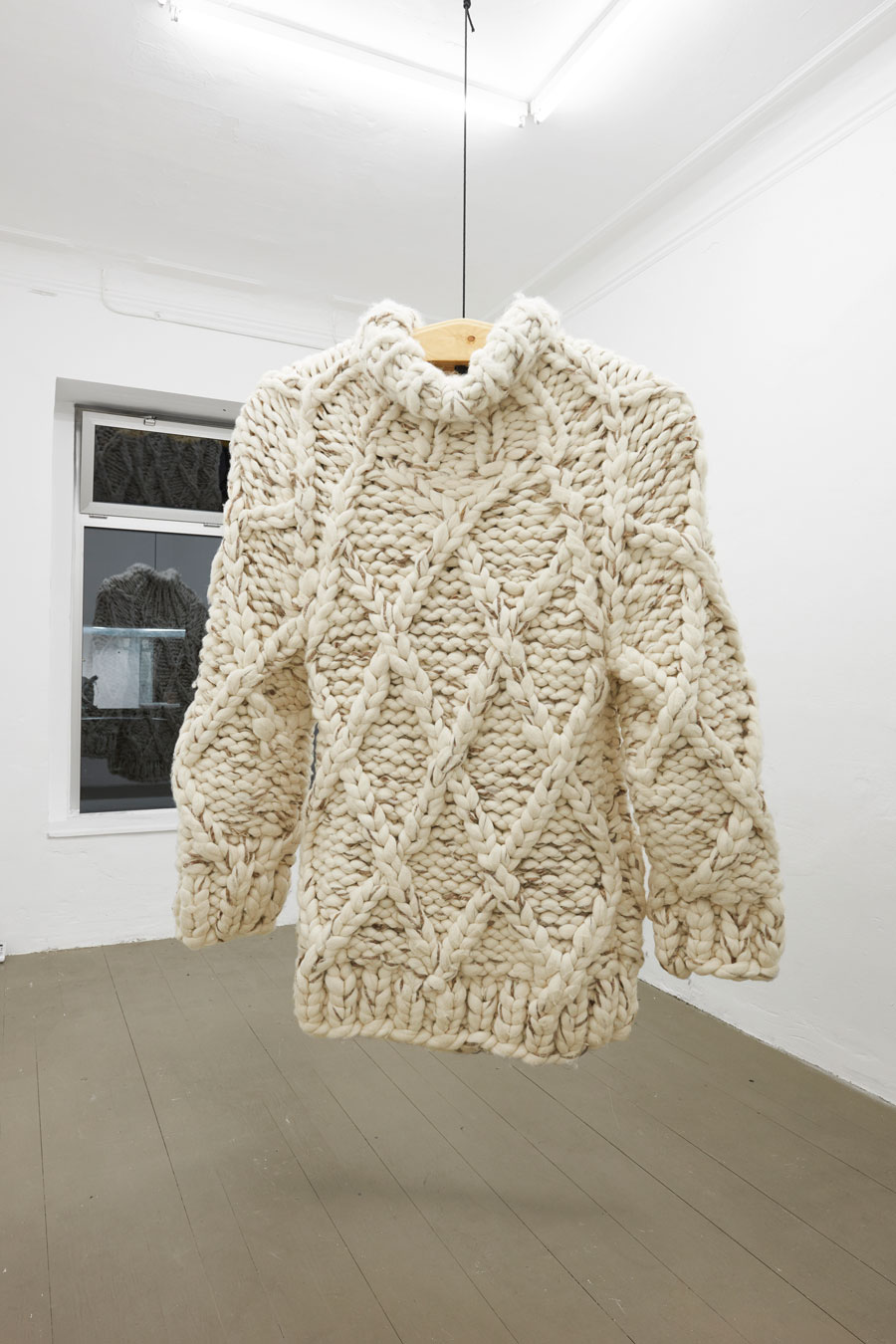Daniel Dewar & Grégory Gicquel
Jan Kaps, Cologne, Germany
Jan Kaps, Cologne, Germany

In the age of additive manufacturing and rapid prototyping, when formula can so precisely become form, handmade processes and experimentation with craft have become bold arenas of artistic production once more. However, this approach is one that artist duo Daniel Dewar & Grégory Gicquel have followed for the past 15 years: combining concept and technique to make objects by hand with an emphasis on, and yielding to, their materials’ inherent properties. Their first exhibition at Jan Kaps, ‘Stoneware, Murals and Vessels, Tapestries and Wood Carvings’, reads as a humorous meditation on the artisanal. Working with ceramics, wood and wool, the artists employ traditional decorative arts and crafts techniques to devise a series of sculptures that, despite their manual means of production, are entirely innovative.
In one gallery, seven free-standing or wall-mounted receptacles, created using a Japanese high-fire stoneware process, take the form of recognizable sanitary-ware items – Western-style toilets, bidets and sinks – based on standard models manufactured and sold for domestic and commercial use. The laborious creative process involved in these assiduously produced objects – apparent in their kilned, fiery imperfections and uneven, hand-worn surfaces – imparts a singularity to each.

This unique quality contrasts with the works’ commonplace design and (base) utility. These vessels speak volumes: on one level, they beg to be used by the human body, filled with its waste; on the other, their elaborately hand-worked, ergonomic forms emulate eminent prototypes. Take, for example, the ensemble Stoneware Pitcher and Basin Wash Set No. 4 and Stoneware Vessel (both 2014): two free-standing works that have the appearance of a human leg and foot at the lower end while the upper parts are modelled on Ancient Greek oenochoe (wine jugs). In the frieze Stoneware Mural with Pipes No. 2 (2015), ten variations on a pipe motif, recalling that from René Magritte’s The Treachery of Images (1929), protrude into the gallery space, stemming toward the viewer.
Elsewhere, each of three Benches Nos. 1, 2, 3 (Digitalis) (all 2016), intricately carved from Lambert’s cypress, is arranged to face the same wall. Dewar and Gicquel once again confound a strict division of manual labour and mechanized process, further complicating the work with three identical cushions, one on each bench, machine-embroidered with repeating rows of an abstracted digitalis (‘finger-like’) flower pattern to accentuate the opposition between hand and machine. The bench is, of course, the traditional seat of repose; yet, the delicately moulded, vertebral-looking frames of these benches are too fragile and decorative to support actual human weight.

There is a similar confrontation between use and uselessness in Tapestry (Aran, Small Braid) (2014). Hanging from the ceiling and occupying much of the adjacent gallery space, the six-foot work – which is not, in fact, a tapestry but an Alpaca wool jumper – is too large and cumbersome ever to be worn; its vast, dense woven folds serving only to shroud rather than clothe any potential wearer. The work is both contrived for and indifferent to the human form.
This is the case for the entire exhibition, in which the ostensible use value of handmade objects is rendered redundant. Dewar & Gicquel’s urinals, chairs and sweaters are as empty or as full as we want them to be: they offer only the possibility of containment or comfort, nothing more. These works resist any of the facile takeaways – imagistic, conceptual – that we have come to expect in our rapid digestion of objects and ideas. Dewar & Gicquel’s vacant vessels merge the travail of the handmade with readily accessible subject matter. Our swift and current consumption of objects is decelerated here by the reality of crafted, material labour before us.






















